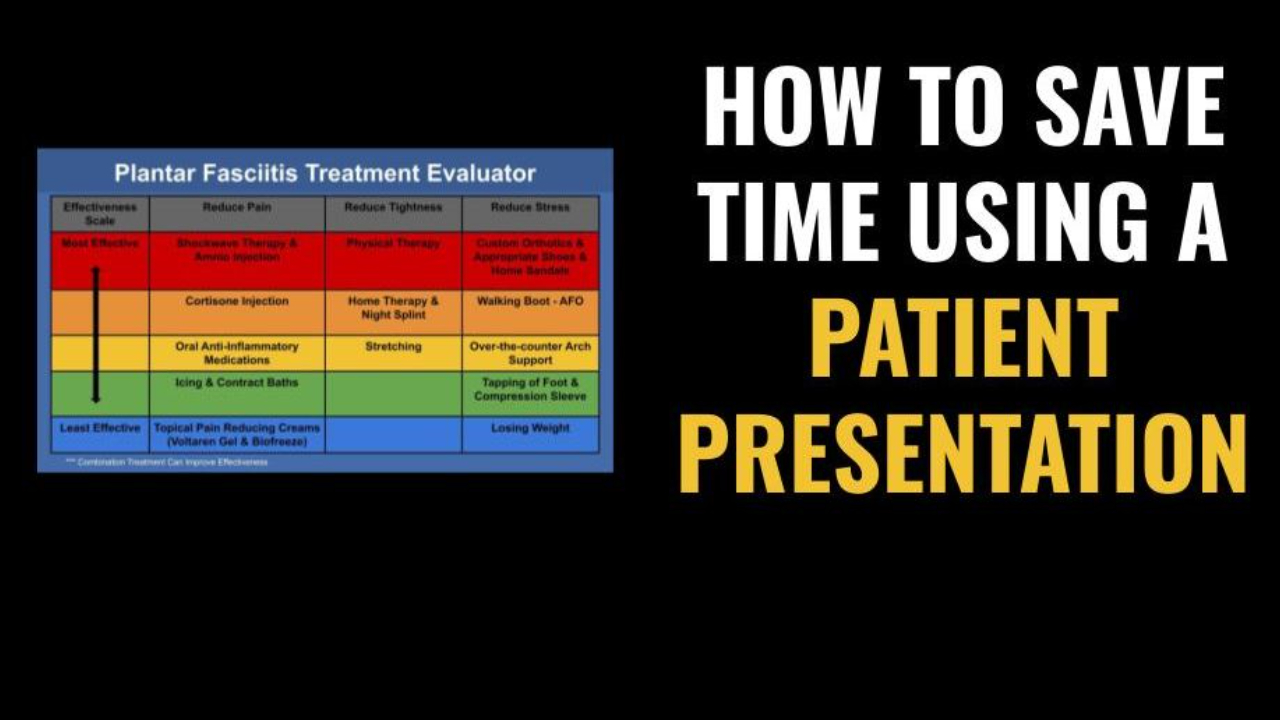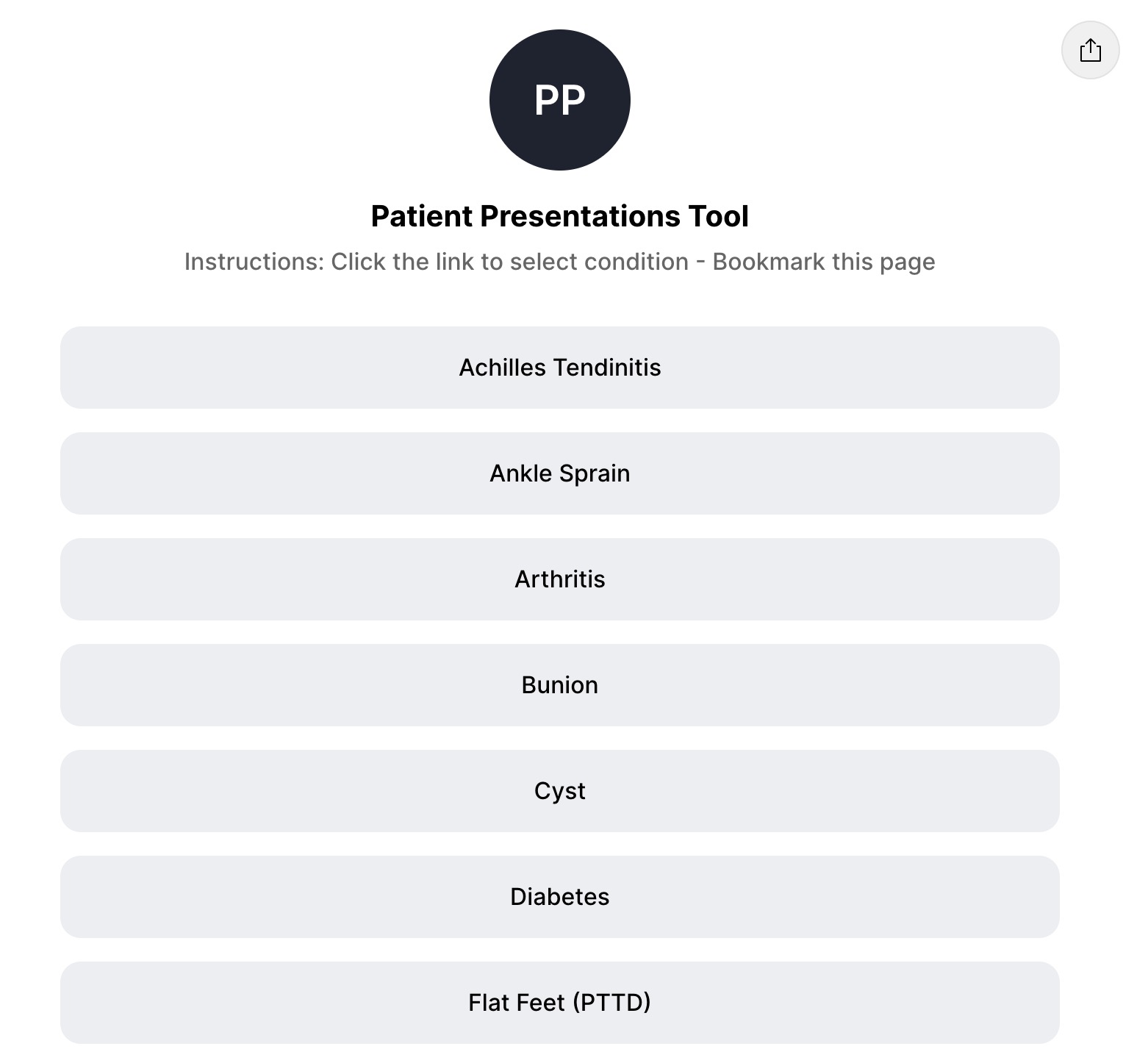
#003: How you can save time using a patient presentation
Read time: 4 minutes
Do you want to save time and stop getting behind?
I know how you feel and today I am going to share my #1 tip for saving you more time with each patient encounter.
I will teach you how to use something called a “Patient Presentation” to get you moving while giving good quality care.
This is important because complex patients cause us to fall behind and are difficult to explain.
Unfortunately, most doctors fail to give comprehensive explanations due to the amount of time it takes.
To speed things up, we cut out much of our explanation, but this isn’t best for our patients.
Using “Patient Presentations” can save you time and help you give better care while increasing your profit.
Today you will learn:
- Why a presentation is the “best” way to treat patients
- How to easily design your presentations (or use mine)
- How to share your presentation in the treatment room
- How to increase revenue with your presentations
1. Why a presentation is the “best” way to treat patients
This might be presumptuous, especially if you have never heard of a “Patient Presentation,” but you may have heard of “patient protocols” or “canned explanations.”
When we start practicing, we develop our own protocols or “the way we do things.”
This may be explicit with these protocols being written down or implicit where they are housed in our head.
Regardless, after practicing for a few years you have developed your own style for treating common conditions in your practice.
You have a way of explaining the conditions, an order of offering treatments and when you need to refer out to someone else. This is your protocol and “canned explanation.”
If you place these in a PowerPoint or Google Slide deck then you have a patient presentation.
I argue a presentation frees us up as providers to be more thorough and spend save time in each patient encounter.
Let me give you an example of common slides in a presentation for plantar fasciitis
Cover Slides - This slide goes over the diagnosis name.

Question Slides - These go over some of the common questions related to the condition.


Explanation Slide - This is a slide that goes over the anatomy and the cause of the condition.

Imaging Slide - This slide goes over the different imaging techniques to verify the condition.

Treatment Slide - This slide goes over all the treatment options in an organized fashion.

2. How to easily design your presentations (or use mine)
You can easily make these presentations here is what you need:
Display device - You will use a computer, tablet, or paper printout with the slides.
Slides - These can be made with PowerPoint or Google Slides.
Having done these for a number of years, here are a few recommendations:
- Start with one condition to begin.
- Initial slides should take be simple black and white with a few pictures.
- The presentation should only take 2-3 more minutes.
- Give access to the presentation or recorded video of the presentation on your website.
Get my Patient Presentations Tool - You can access the presentations that I use every day in my private practice. Even if you are in a different specialty you can use my slides to help develop your own slide decks - HERE

3. How to share your presentation in the treatment room
It can be a challenge to get in the groove of using presentation during your typical workflow. Here are some suggestions:
Wording - I use the presentations after I talk to the patient, evaluate their gait, and evaluate their x-rays. Only then do I say, “Mrs. Jones I like to use slides to help explain your condition, is that okay?”
Using presentation on a computer - I then pull up the Patient Presentation Tool on my computer browser and show it to the patient.
(You can use iPad, tablet, or even printed paper as well)
I think my Patient Presentation Tool is superior to Google Slides because it shows the slides if full-screen mode as well there is an index to choose the appropriate condition.
If you want to make your own on Google Slides, you will save a folder to your browser with each slide deck separate. Here is an example of my folder on Google Chrome.

4. How to increase revenue with your presentations
I usually have two “money slides” in my presentation.
These slides help me explain treatments and imaging easier.
Continuing with plantar fasciitis, as explained above, the diagnostic exam slide helps me to show the importance of x-ray and diagnostic ultrasound.
Wording for ultrasound - I say, “Mrs. Jones, we did an x-ray today, but I think a better way to assess your plantar fasciitis is with a diagnostic ultrasound. You can see here in the pictures that the injured side is thicker and darker. On the next visit, we will perform an ultrasound if indicated.”

Using the Treatment Evaluator - This is my most valuable slide. This has most but not all of the treatments for a condition.
This slide has an Effectiveness Scale that ranks the relative effectiveness of the given treatment. I use this to teach patients that not all treatments are equally effective. Some are more effective while others are less.
As well I have grouped treatments into different categories, such as Reduce Pain, Reduce Tightness, and Reduce Stress. This is a method to help explain different potential treatments to patients.
My most common wording is, “Mrs. Jones, there are certain treatments that are more effective than others. Most people that come to see me have tried the treatments below the yellow line that are less effective. When I start seeing patients, I recommend those treatments that are more effective. These treatments are used to reduce pain, reduce tightness and reduce stresses going through the injured part of your foot.”

I specifically use this Treatment Evaluator in two ways.
- For the first visit, I go over the different treatment options that we will start using. I show this slide after I go over the anatomy and ask the patient the typical questions during the examination.
- I use this slide ONLY when a patient returns to look at what treatments they have tried and what has worked and what has not worked. I often have patients that look at the slide and ask me for an AFO, night splint, or even a walking boot. This is pure added revenue.
I especially like using the Treatment Evaluator because it is more objective about treatment options and allows me to be less emotional when seeing the patients. I look at what they have done and what is still available based on the list of treatments.
Final thoughts
Using Patient Presentations has simplified my private practice, and I use them daily in the office. I would encourage you to try them out by making your own or trying to use mine.
To take the presentations to the next level, you can easily record them and place them on your website for your patient's easy access before or after their appointment.
Try them out, and let me know, what you think!
